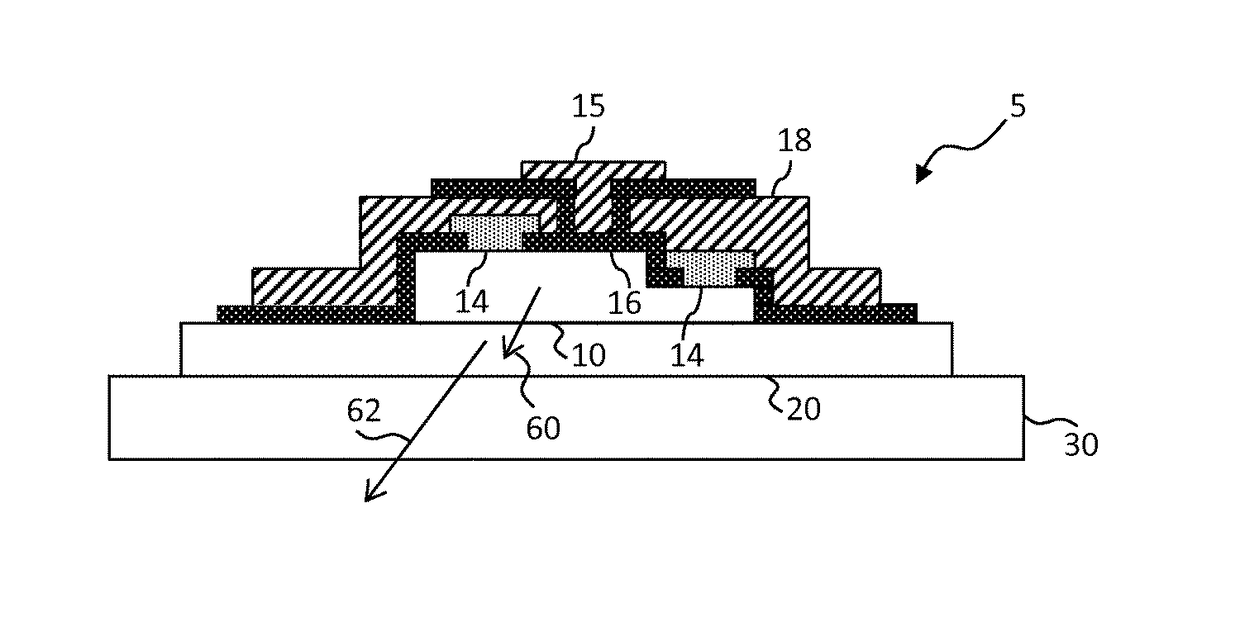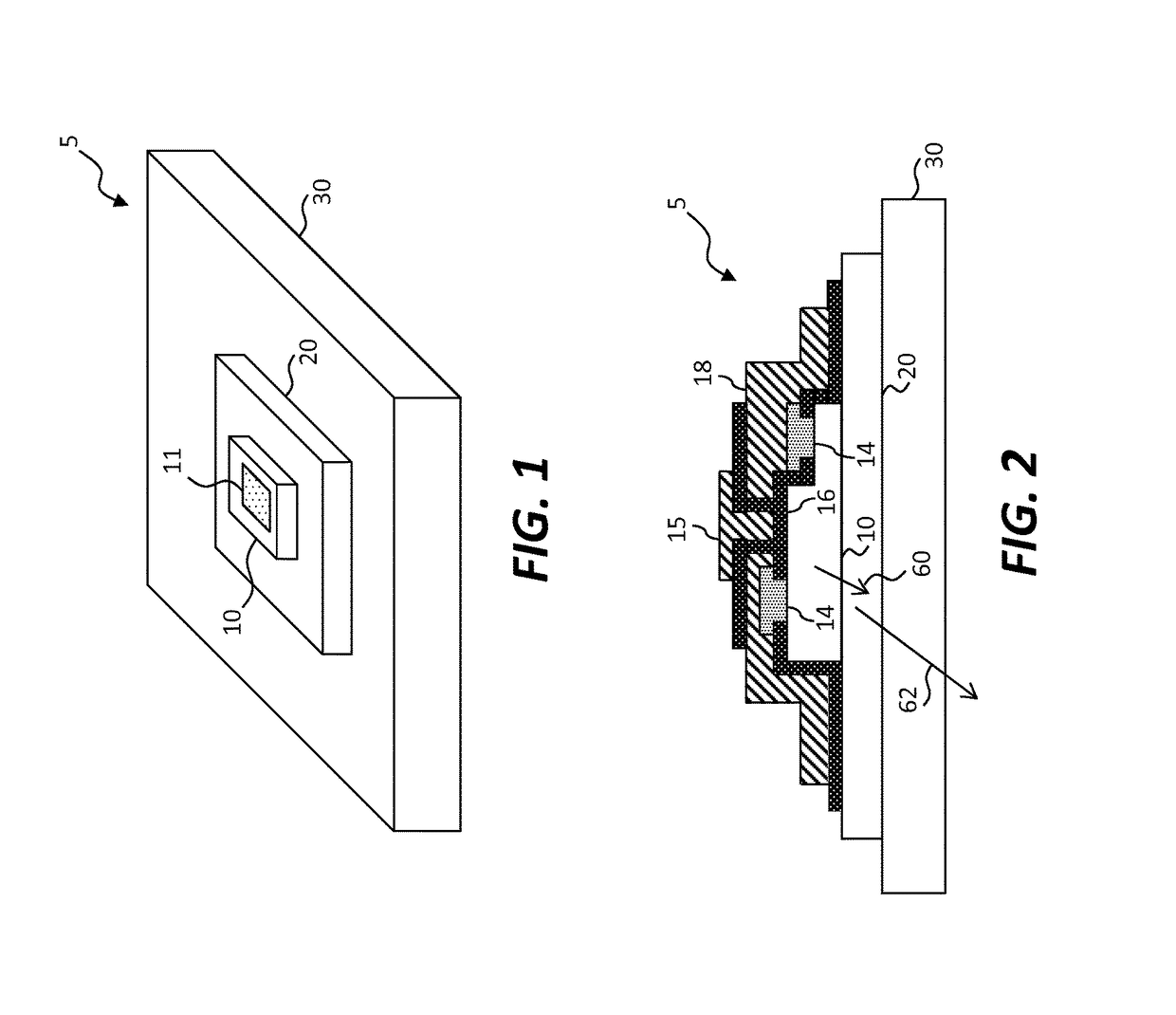Crystalline color-conversion device
a color conversion device and crystal technology, applied in semiconductor laser excitation apparatus, lasers, semiconductor laser optical devices, etc., can solve the problems of high manufacturing cost, difficult to maintain pattern accuracy using metal shadow masks over large display substrates, and wasting much of the white light produced by back light, etc., to improve electrical efficiency, improve optical efficiency, and improve the effect of saturated colored ligh
- Summary
- Abstract
- Description
- Claims
- Application Information
AI Technical Summary
Benefits of technology
Problems solved by technology
Method used
Image
Examples
Embodiment Construction
[0087]Referring to FIG. 1, in an embodiment of the present invention a crystalline color-conversion device 5 includes an electrically driven first light emitter 10 for emitting light having a first energy in response to an electrical signal, for example from a controller (not shown), from a light-emitting area 11 within the first light emitter 10. An inorganic solid single-crystal direct-bandgap second light emitter 20 having a bandgap of a second energy less than the first energy is electrically isolated from the first light emitter 10, is located in optical association with the first light emitter 10, and is located within 0 to 250 microns of the first light emitter 10 so that in response to the electrical signal the first light emitter 10 emits first light that is absorbed by the second light emitter 20 and the second light emitter 20 emits second light having a lower energy than the first energy.
[0088]As used herein, “in optical association” means that light from the first light...
PUM
 Login to View More
Login to View More Abstract
Description
Claims
Application Information
 Login to View More
Login to View More - R&D
- Intellectual Property
- Life Sciences
- Materials
- Tech Scout
- Unparalleled Data Quality
- Higher Quality Content
- 60% Fewer Hallucinations
Browse by: Latest US Patents, China's latest patents, Technical Efficacy Thesaurus, Application Domain, Technology Topic, Popular Technical Reports.
© 2025 PatSnap. All rights reserved.Legal|Privacy policy|Modern Slavery Act Transparency Statement|Sitemap|About US| Contact US: help@patsnap.com



